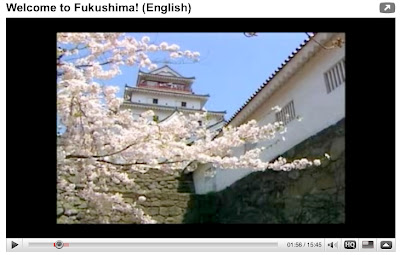
I’ve not told many people about this, but one of the reasons that I’m going to Japan is because of the food. I am a food lover in general and I’m very fortunate to live in a city that enjoys a palette that is as diverse as the people living here. Eating Japanese food is especially a privilege here and I look
 forward to comparing our Western imitations of Japanese food to the real thing.
forward to comparing our Western imitations of Japanese food to the real thing.Maybe this needs clarification and maybe it doesn’t, but my tastes are also a bit broader than the typical “California roll combo,” which is found in its abundance all over Vancouver. Of course I enjoy a good California roll just as much as the next Vancouverite. However, some of my favorite Japanese cuisines include their selection of noodle dishes – ramens, udons, and soba noodles, which are very common here, but also very underappreciated. I was very happy to learn that one of Japan’s leading ramen cities can actually be found in Fukushima prefecture. I’ve read that the city, Kitakata, has one of the highest ratios of ramen bars per capita in the world.
Another recent discovery for me is the Japanese hot pot, or Sukiyaki hot pot, which uses a soy sauce and cabbage base to cook meats and vegetables in. I’ve been a big fan of Chinese and Korean hot pots for a while and the Japanese equivalent ranks just as high for me.

 Although I’m looking forward to immersing myself in Japanese cuisine, I am definitely starting to feel a bit of pre-departure anxiety towards the foods that I will be leaving behind. I have for the last few weeks been dealing with the reality of leaving my friends and family behind – my social network, my social safety net, my social
Although I’m looking forward to immersing myself in Japanese cuisine, I am definitely starting to feel a bit of pre-departure anxiety towards the foods that I will be leaving behind. I have for the last few weeks been dealing with the reality of leaving my friends and family behind – my social network, my social safety net, my social  security. Similar to these social comforts, I have also enjoyed for most of my life a sense of culinary comfort as well. I can appreciate the fact that I can walk into a restaurant or supermarket and be able to recognize the majority of items here.
security. Similar to these social comforts, I have also enjoyed for most of my life a sense of culinary comfort as well. I can appreciate the fact that I can walk into a restaurant or supermarket and be able to recognize the majority of items here.Of course, food and people really go together. When I say that I will miss the foods that I’ve enjoyed all of my life in Vancouver, I think that much of this is connected to the people that I’ve had the pleasure of sharing these foods with. Included in this post are some shots that I took of the dinner that Janice and I made for ourselves last night. Although the steaks were a bit tough, I think that it was one of our more successful endeavors to date.





























